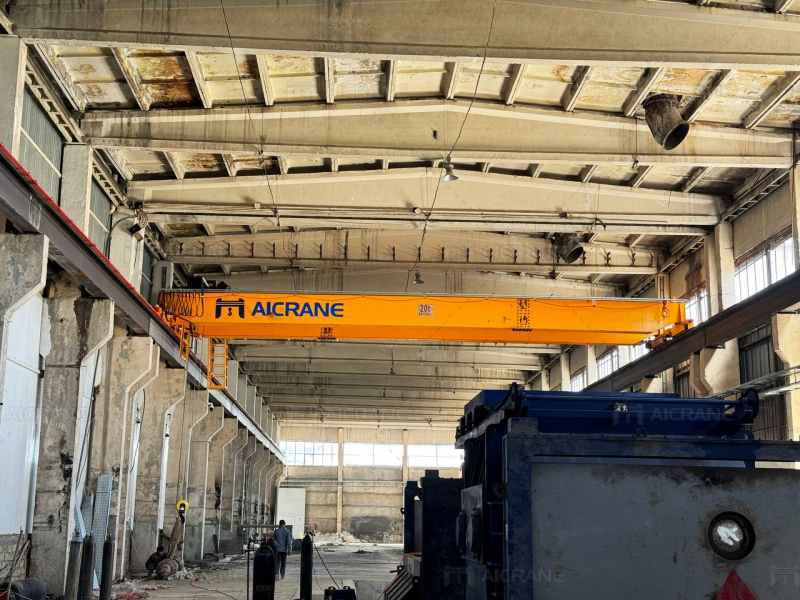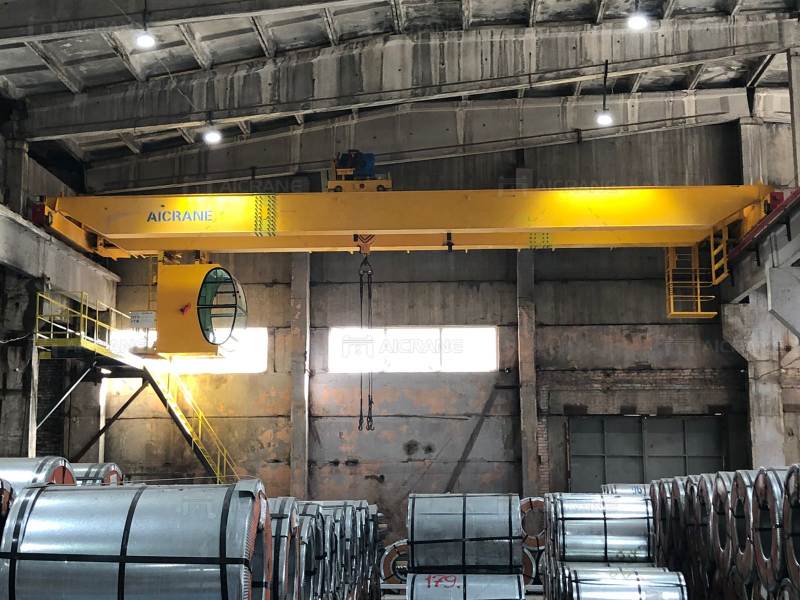In the fast-paced world of modern manufacturing, efficiency and precision are paramount. Facilities aim to maximize productivity while minimizing downtime and reducing the overall cost of operations. One key piece of equipment that plays an essential role in achieving these goals is the double girder overhead crane. Known for its strength, versatility, and reliability, a double girder overhead crane can be a game-changer for manufacturing facilities handling heavy materials. This article explores the role of double girder overhead cranes in enhancing manufacturing efficiency and examines why they’re an ideal choice for various industrial applications.

What Is a Double Girder Overhead Crane?
A double girder overhead crane is a type of bridge crane that features two parallel girders, or beams, that support the hoist and trolley system. This design allows the crane to handle significantly heavier loads compared to its single girder counterpart, making it suitable for heavy-duty applications. Double girder cranes can be mounted on top of building columns or on independent structures, allowing them to cover large areas with ease. They can lift loads ranging from a few tons to hundreds of tons, depending on the specific model and setup.
Key Advantages of Double Girder Overhead Cranes
Double girder overhead cranes offer a range of benefits that contribute to improved efficiency and performance in manufacturing settings:
1. Higher Load Capacity
One of the primary reasons manufacturing facilities choose double girder electric overhead travelling cranes is their ability to handle extremely heavy loads. Their double-beam design provides additional stability and support, allowing them to lift heavier items with ease. This capability is essential for facilities that handle large and dense materials, such as steel, automotive parts, and construction equipment components. With a double girder crane, manufacturers can handle larger loads safely and efficiently, often eliminating the need for multiple lifts.
2. Enhanced Precision and Control
Modern double girder cranes are equipped with advanced control systems that allow operators to move materials with exceptional accuracy. With precise speed controls and minimal sway technology, operators can easily position loads exactly where they’re needed, reducing the risk of errors or accidental damage. Enhanced control capabilities not only improve safety but also increase the overall productivity of the facility by reducing the time required to complete each task.
3. Optimized Space Utilization
Double girder cranes are designed to maximize vertical space within the facility. Because they operate overhead, they free up valuable floor space that can be used for other essential operations, such as assembly lines, workstations, and storage. Additionally, double girder cranes typically have a higher lifting height, allowing for better vertical reach. This is particularly beneficial for manufacturing plants with high ceilings, as the crane can lift materials closer to the roof, creating more room for ground-level operations.
4. Enhanced Durability and Longevity
Built to withstand the demands of heavy industrial use, double girder cranes are constructed from high-quality materials designed to last. The robust build of these cranes means they require less frequent maintenance and are less prone to wear and tear. Their durability translates to fewer disruptions in operations due to equipment failure, allowing manufacturers to maintain a steady workflow and avoid costly downtime. Double girder cranes always adopt top running crane style to meet special heavy loads handling needs.

Applications of Double Girder Overhead Cranes in Manufacturing
Double girder cranes find extensive applications in various manufacturing industries due to their strength and versatility. Here are a few common examples:
- Steel and Metal Fabrication: Facilities that handle large metal sheets, beams, and coils benefit from double girder cranes, which can easily lift and position heavy materials.
- Automotive Manufacturing: Double girder cranes are used to move engine blocks, vehicle frames, and other heavy automotive parts, enabling streamlined assembly and transport.
- Construction Equipment Production: Manufacturing of construction machinery involves handling dense materials like steel beams and machinery components, making double girder cranes a valuable asset.
- Chemical and Petrochemical Plants: In facilities where large equipment and heavy materials are common, double girder cranes ensure safe and efficient lifting and positioning.
Improving Workflow Efficiency with Double Girder Cranes
By integrating double girder cranes into their operations, manufacturing facilities can achieve significant gains in efficiency. The ability to handle large loads reduces the need for multiple pieces of lifting equipment, simplifying material handling processes and speeding up production timelines. Additionally, the cranes’ precise control and stability minimize the risk of errors, reducing the need for rework and enhancing product quality.
Double girder cranes also facilitate seamless workflow transitions by enabling operators to move materials quickly and accurately from one stage of production to the next. With automated systems and ergonomic controls, operators experience reduced fatigue, leading to higher productivity and overall efficiency. If you are interested in knowing more about different overhead cranes types and features, you can click here to get details: https://aicranemachine.com/overhead-crane/.
Safety Features in Modern Double Girder Cranes
Safety is always a priority in manufacturing, and modern double girder cranes come equipped with numerous safety features that protect both operators and materials. These features may include:
- Anti-sway technology: Reduces load swing, allowing for safer and more precise movement.
- Overload protection: Prevents the crane from lifting weights beyond its safe limit.
- Emergency stop systems: Allows operators to stop the crane immediately in case of emergency.
- Limit switches: Automatically stop the crane when it reaches its travel limits, preventing accidents.
These safety mechanisms not only protect personnel but also prevent costly equipment damage, contributing to a safer and more reliable work environment.
Conclusion
Double girder overhead cranes play a crucial role in modern manufacturing by enhancing load capacity, increasing precision, and maximizing space utilization. With their durable construction, these cranes provide a reliable solution for heavy-duty lifting in diverse industrial applications. By investing in a double girder crane, manufacturing facilities can achieve greater efficiency, reduce downtime, and ensure safe, effective operations. As technology advances, the functionality and versatility of these cranes will continue to evolve, solidifying their role as a cornerstone of modern manufacturing efficiency.